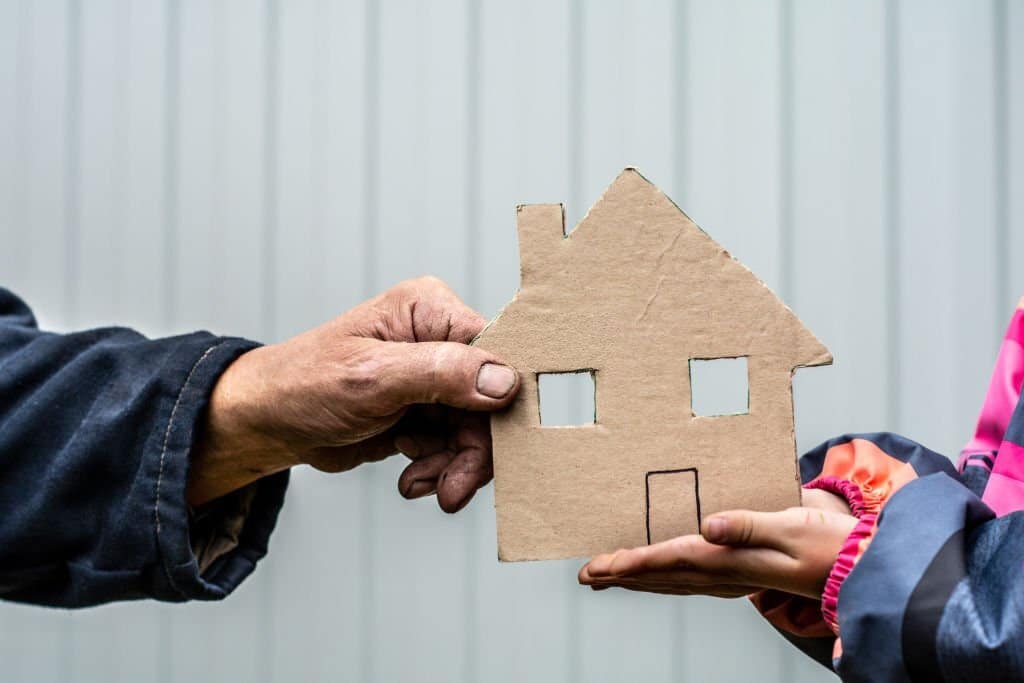The Importance of Supportive Housing
Supportive housing is fundamental to human dignity and security – yet only 1 in 4 households in need of supportive housing receive the assistance they are entitled to.
Supporting those unhoused or at risk of homelessness is a complex challenge, but it can be addressed with a multi-faceted approach that addresses short- and long-term solutions.
Together, we can work to break down the barriers preventing many from accessing safe, secure homes.
In this blog post, we’ll explore the importance of supportive housing as well offering creative solutions to provide immediate help for these individuals and families.
What is Supportive Housing?
Supportive housing is an umbrella term used to describe a range of housing options specifically designed for people who are unhoused or at risk of homelessness.
The concept of supportive housing emerged in reaction to the New York City housing crisis of the 1970s.
It is the more compassionate and cost-effective approach to reducing homelessness for those most at risk: women and families coping with a mental health issues, dependence, and chronic disease.
What’s more, supportive housing services should always be provided in a non-discriminatory manner, regardless of race, gender, religion, or sexual orientation.
This type of housing combines independent living with on-site support services, such as:
● Case Management
● Health Care Services
● Mental Health Services
Supportive housing can also include additional services like job training, education, and financial counseling.
It is considered a key component of the housing-first approach to homelessness, as it provides vulnerable populations with a safe and stable environment to rebuild their lives.
Essential Aspects of Supportive Housing
The Department of Housing and Urban Development (HUD) estimated that there were 582,462 individuals living on the streets in the United States and its territories in December of 2022.
Whenever we discuss the importance of supportive housing, it is important to consider the following aspects:
1. Affordability
Supportive housing should be affordable for those who need it. This means that rent should be set at a level so that individuals and families can afford to pay for their housing without spending excessive income on rent.
In most cases, rent shouldn’t exceed 30% of a tenant’s monthly gross income.
2. Stability
Supportive housing should provide a stable environment for individuals and families, free from the fear of eviction or displacement. This means that supportive housing should have long-term leases and minimal turnover to ensure continuity for tenants.
3. Multidisciplinary Services
The suppliers of these services also aid renters with matters like securing welfare benefits and finding gainful work, as well as their physical and mental health and any drug abuse problems they may be experiencing.
Multidisciplinary groups provide care, including mental health and drug abuse experts, medical physicians, nurses, and caseworkers.
In addition, a variety of service providers may need to collaborate in order to meet the varied demands of tenants.
Teams like these also make an effort to connect individuals with conventional service infrastructures, such as employment services and training, when relevant.
4. Low Starting-barriers
It is vitally important that those in need of supportive housing can access it without having to jump through a number of complicated processes or put up large deposits.
This means that the entry barriers for tenants should be kept low and that the process of gaining access to supportive housing should be easily navigable. For example:
● Tenants should not be required to prove their homelessness to access supportive housing
● Tenants should have the right to bring along pets and personal belongings
● They should receive support to help them make necessary payments for rent and other costs associated with their housing
5. Integration
People and families may have their own lives and responsibilities in residential areas, whether they choose to live in flats or single-family houses.
Public transit, grocery shops, parks, and other community facilities should be easily accessible to tenants living in supportive housing.
As a general rule, clients need not lack service access if they move, as services may be offered in the client’s apartment or facility or at a location of the client’s choice in the community.
However, if residents have difficulty reaching service providers’ facilities, this might jeopardize their housing and health.
6. Freedom of Choice
Those in need of supportive housing should have the right to choose which service they use and when. This freedom of choice is critical to ensure tenants can access the most suitable housing and services for their needs.
For example, tenants should have the right to choose:
● Where they live
● How long do they stay
● What services do they access
And ultimately, they should have the right to decide their next steps regarding their housing. It is also essential to ensure tenants don’t feel coerced or forced into using particular services.
Some Proven Facts About Supportive Housing
Numerous studies have shown that persons provided with supportive housing are more likely to maintain permanent residences in the community.
Most of these studies have included persons who are homeless and who have significant impairments, such as those with mental illness, drug use problems, or other persistent physical conditions like HIV/AIDS.
Some newer research examines the efficacy of supportive housing for other demographics, for example, seniors and families.
There are four major inferences to be drawn from the study:
● Disabled persons may find stability in the community through supportive housing.
● Supportive housing decreases the need for expensive services like hospitalization and incarceration for people with disabilities.
● Many persons with disabilities benefit from and see an improvement in their health after moving into a supportive housing environment.
● It is probable that people from other demographics, such as elderly people who want to age in place and families who want to keep their kids out of the foster system, also reap the benefits of supportive housing.
As a result of this broad fundamental understanding, supportive housing policy is spreading to aid other marginalized groups, including homeless youth, who often have experienced the child and youth welfare system.
They battle with mental health difficulties and trauma, and persons with developmental disabilities, who really are typically housed in isolated care facilities instead of socialized in the community.
Supportive housing benefits many populations; however, further study is needed to determine how its effects can vary for different populations.
Supportive Housing Reduces Costly Systems
Many experts and regulators are now attempting to determine whether the savings from reduced trips to emergency rooms, inpatient facilities, care homes, and mental institutions can cover the expense of providing supportive housing.
The current research provides findings that differ in terms of the extent to which costs are reduced and the systems targeted.
The New York research mentioned above indicated that reductions in utilization covered nearly 95% of the expense of supportive housing. In contrast, another major report revealed a decrease primarily in the homelessness system.
One well-conducted research indicated significant potential healthcare cost reductions by focusing on a high-needs population. Participants were selected from a hospital for the homeless with chronic conditions and low survival risk.
Over the course of the trial period, those who were provided with supportive housing were less likely to use healthcare services overall, with hospitalization rates down by 23%, ER visits down by 33%, and nursing home stays dropping by 42%.
According to the research, these savings, together with others, amount to nearly $6,000 for each individual annually, more than covering the cost of supportive housing.
Maximizing the Impact of Supportive Housing
Unfortunately, only a fraction of those who might most gain from this kind of housing ultimately access the resources available.
Although there is considerable data on homelessness, neither the demand nor the availability of supportive housing can be precisely estimated.
As a result, governments should think about four linked approaches to expanding supportive housing to fulfill the demand:
● Improve rental aid and infrastructure.
● Budget surpluses generated through supportive housing may be reinvested to increase the supply of low-income subsidized housing.
● Leverage more Medicaid funding for homes with services for the chronically homeless.
● Restrict access to people who really need rental assistance.
How Are Welcome Home Kits Beneficial to the Supportive Housing System?
Welcome Home Kits are a necessary component to support housing, as they supply the essentials a person needs, that they would not otherwise be able to purchase themselves. They can also give a sense of comfort and familiarity as these items often remind people of their previous homes. They also provide a sense of stability to those living in supportive housing, as they know their basic needs are taken care of.
This can include everything from:
● Basic kitchen items such as pots and pans
● Bedding and linens
● Hygiene products such as toothbrushes and toiletries
● Cleaning supplies
Life Startup Essentials: Welcome Home Kits
Life Startup Essentials partners with community agencies to help efficiently provide home goods to housing program recipients.
Welcome Home Kits are available in both pre-configured and custom options to meet the needs of all those using supportive housing. They can be tailored to each individual agency, so to meet specific requirements or budgets as well.


